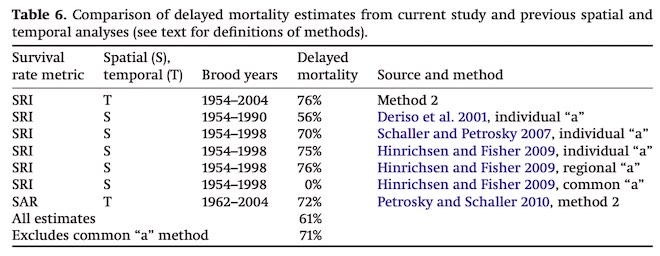forum
library
tutorial
contact

Snake River Dams and SARs
by David A. CannamelaIdaho Statesman, July 2, 2021
|
the film forum library tutorial contact |

|
Snake River Dams and SARsby David A. CannamelaIdaho Statesman, July 2, 2021 |
 For decades now, dam supporters, including the federal "dam agencies" and certain politicians, have used point estimates of juvenile salmon and steelhead survival to argue that the four lower Snake River dams are not the cause of the imperiled status of Idaho's runs. This is like using the instantaneous survival rate of an accident victim being ambulanced to the hospital, to conclude that he will survive. A 100% survival rate between mile markers means nothing and consoles no one when the accident proves fatal. Delayed mortality is mortality nonetheless.
For decades now, dam supporters, including the federal "dam agencies" and certain politicians, have used point estimates of juvenile salmon and steelhead survival to argue that the four lower Snake River dams are not the cause of the imperiled status of Idaho's runs. This is like using the instantaneous survival rate of an accident victim being ambulanced to the hospital, to conclude that he will survive. A 100% survival rate between mile markers means nothing and consoles no one when the accident proves fatal. Delayed mortality is mortality nonetheless.
Smolt-to-adult survival (SAR), the percentage of smolts that return as adults, is the metric that matters. Our stocks are on an extinction trajectory because their SARS are below replacement (2%). Meanwhile runs from the Deschutes, John Day, and Yakima systems, above two, three, and four dams, remain viable with SARS in the 2-6% range: Same time and place in the same ocean, which doesn't dole out differential mortality. The science is simple: The dammed lower Snake accounts for the extra mortality, delayed or instantaneous.
Congressman Simpson has seen the light. River restoration (via dam removal) and the resulting sustainable fish runs would bring us lasting cultural, spiritual, economic and ecological wealth.
learn more on topics covered in the film
see the video
read the script
learn the songs
discussion forum
